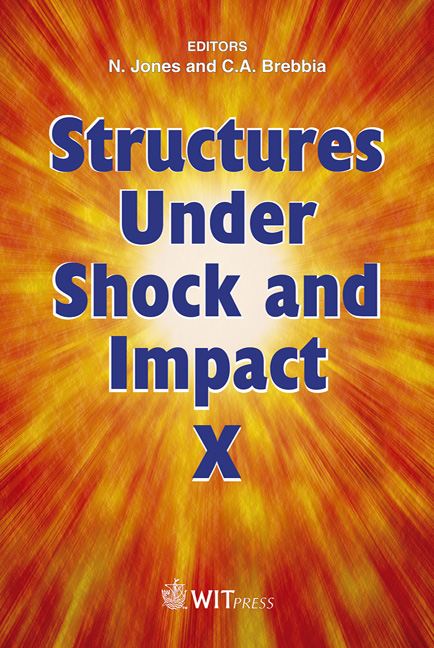High Velocity Impact Of A Composite Sandwich Panel
Price
Free (open access)
Transaction
Volume
98
Pages
11
Page Range
3 - 13
Published
2008
Size
536 kb
Paper DOI
10.2495/SU080011
Copyright
WIT Press
Author(s)
M. S. Hoo Fatt & D. Sirivolu
Abstract
Analytical solutions for the deformation response of a composite sandwich panel subjected to high velocity impact by a rigid blunt, cylindrical projectile are presented. The solution is derived from a two degrees-of-freedom model for the sandwich panel involving local indentation, core crushing and global bending/shear deformations. An example is given for a composite sandwich panel consisting of orthotropic E-glass vinyl ester facesheets and PVC H100 foam core and subjected to the high velocity impact of a blunt cylindrical projectile. The analytical solution for the local indentation and global deflection under the projectile was found to be within 15% of FEA results. Keywords: high velocity impact, composite sandwich panels, analytical model. 1 Introduction Light weight composite sandwich panels are becoming more widely used in military transport vehicles because they offer greater load bearing capabilities per unit weight and easier maintenance. In some instances, these composite sandwich panels may be subjected to high velocity impact from flying debris from a nearby explosion. While there has been much research on the low velocity impact of composite sandwich panels, very few papers deal with the issue of the high velocity impact of composite sandwich panels [1,2]. The objective of this paper is to develop an analytical model for the deformation response of a composite sandwich panel subjected to high velocity impact by a rigid blunt, cylindrical projectile. Only the mechanical constitutive equations for the facesheet and core are considered in this paper because the thermomechanical equations of state for them are presently unknown.
Keywords
high velocity impact, composite sandwich panels, analytical model.





